Videos
Previous
Next
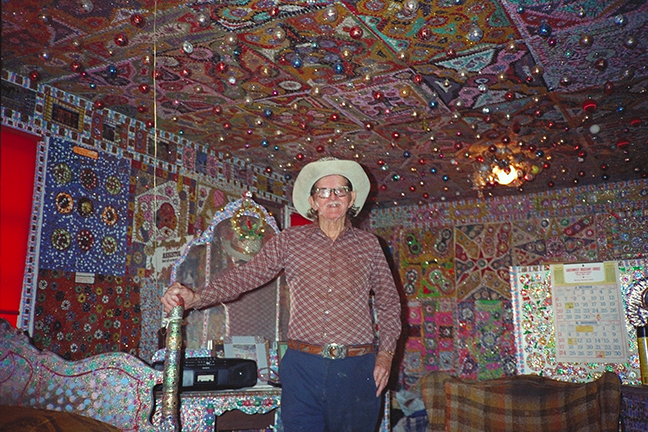
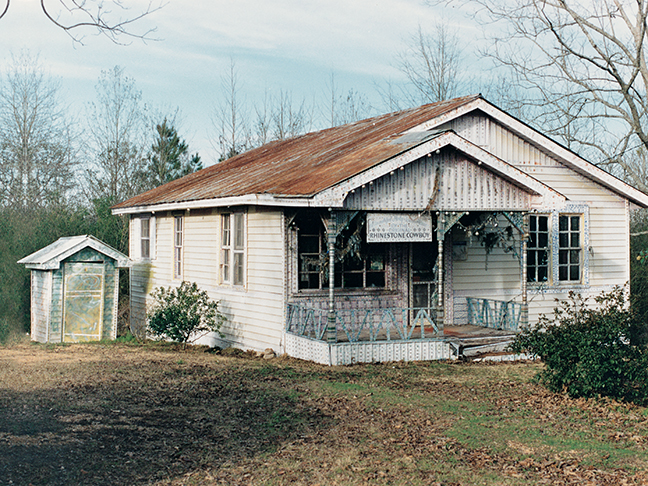
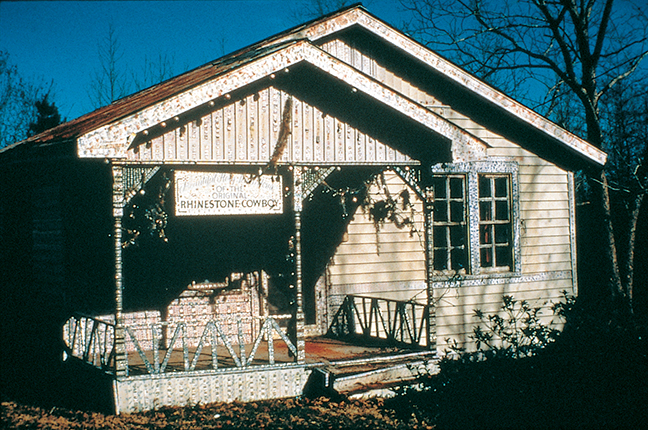
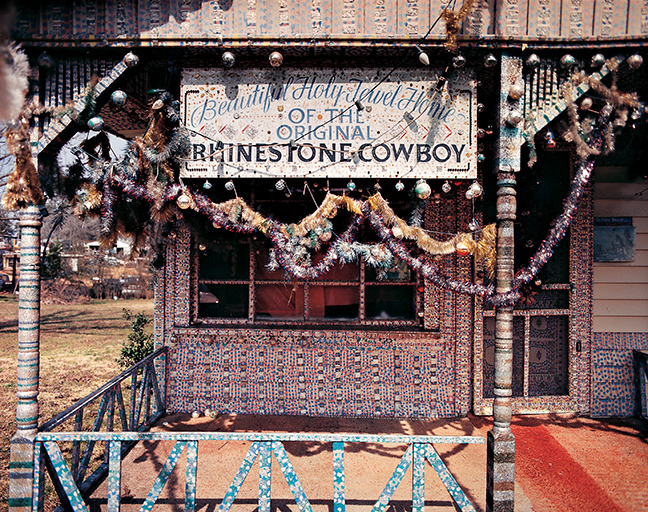
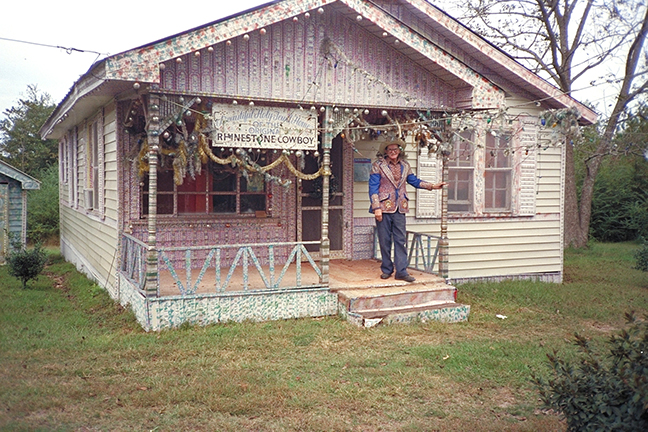
After a divorce and retirement left Loy Bowlin depressed and bored, he transformed himself into “The Original Rhinestone Cowboy.” Dressed head to toe in dazzling outfits he painstakingly embellished with rhinestones and glitter, he performed daily in local shopping plazas, fairs, and flea markets, playing the harmonica, dancing, and telling jokes. Calling himself “The Original Rhinestone Cowboy,” he pursued fame in an adorned 1967 Cadillac. In the mid-1980s, as he approached his eighties and was no longer able to go out and entertain, he redirected his creative energy to his house in McComb, Mississippi, transforming it into the Beautiful Holy Jewel Home. Covered in rhinestones, with the interior swathed in glitter-coated construction-paper wallpaper panels, the house is a complete and total work of art; even the ceilings and furniture were adorned by Bowlin.
After his death, Houston artist Katy Emde acquired the house with the stipulation that it be moved. She worked with Kohler Foundation, Inc., which donated original walls, the front porch, and hundreds of interior elements to the Arts Center.
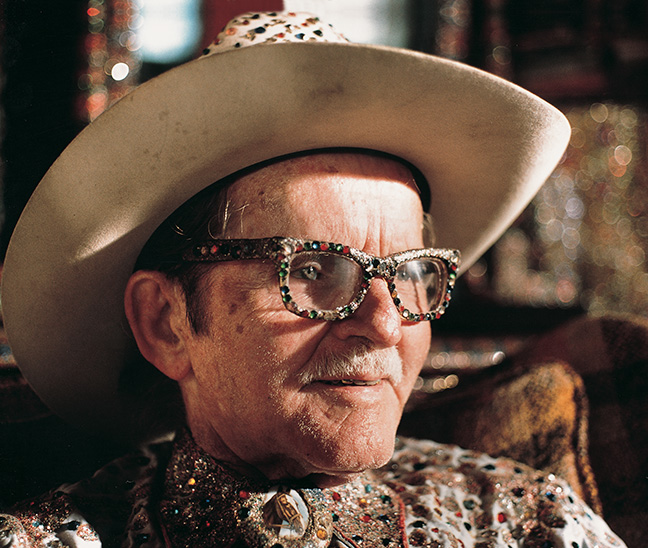
Loy Bowlin was born in 1909 in rural Franklin County, Mississippi, and lived in poverty for much of his life. He married Ina Mae Mitchell in 1933, and the couple farmed and scrapped metal to get by. After their divorce in the 1950s, Bowlin struggled with depression and sought comfort through his Christian faith.
In 1975 Bowlin began to adopt a new persona to lift his spirits, inspired by Glen Campbell’s hit record Rhinestone Cowboy. In a project that took about five years to complete, he covered every inch of the interior, and part of the exterior, with daubs of bright paint and intricate patterns of cutout paper, rhinestones, glitter, tinfoil, tinsel garlands, Christmas ornaments, and collaged photographs and magazine illustrations.
After Bowlin’s death in 1995, Houston artist and collector Katy Emde acquired the house under the stipulation that she remove it from the property. Emde documented and dismantled the home, and Kohler Foundation, Inc., acquired all the components in 1998. The foundation gifted the home along with many of Bowlin’s customized hats, suits, and furniture pieces to the John Michael Kohler Arts Center.
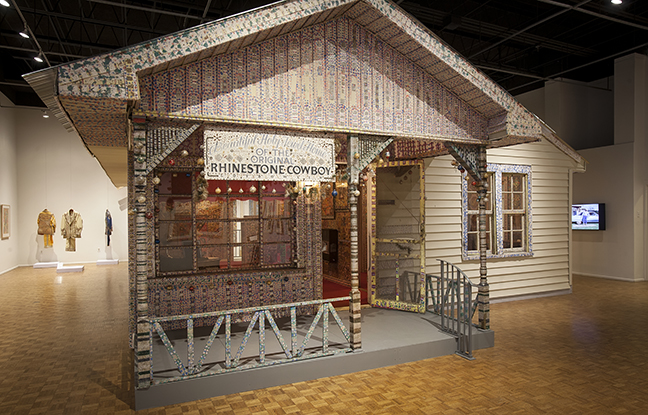
January 29, 2017–March 4, 2018
Hours for both locations:
Tue, Wed, Fri: 10:00 a.m.–5:00 p.m.
Thu: 10:00 a.m.–8:00 p.m.
Sat and Sun: 10:00 a.m.–4:00 p.m.
Arts Center
608 New York Ave
Sheboygan, WI 53081
Art Preserve
3636 Lower Falls Road
Sheboygan, WI 53081
Be the first to find out about exclusive deals, the latest exhibitions, and top trends.
Crown, Carol, and Cheryl Rivers, eds. “Bowlin, Loy.” In The New Encyclopedia of Southern Culture, Volume 23: Folk Art, edited by Charles Regan Wilson, 229-30. Chapel Hill: University of North Carolina Press, 2013.
JMKAC. Loy Bowlin: The Original Rhinestone Cowboy. Sheboygan: John Michael Kohler Arts 2000.
“Loy Bowlin: The Road to My Horizon.” In Sublime Spaces and Visionary Worlds: Built Environments of Vernacular Artists, edited by Leslie Umberger, 224-41. Sheboygan: John Michael Kohler Arts Center and Princeton Architectural Press, 2007.
Manley, Roger, and Mark Sloan. Self-Made Worlds: Visionary Folk Art Environments. Reading, PA: Aperture, 1997.
Rosenak, Chuck, and Jan Rosenak. Contemporary American Folk Art: A Collector’s Guide. New York: Abbyville Press, 1996.
Sellen, Betty-Carol, and Cynthia J. Johnson. 20th Century American Folk, Self Taught, and Outsider Art. Chicago: Neal-Schuman Publishers, Inc., 1993.
Stone, Lisa. “Preserving Loy Bowlin’s Beautiful Holy Jewel Home and Objects, 1999-2003.” In Sublime Spaces and Visionary Worlds: Built Environments of Vernacular Artists, edited by Leslie Umberger, 413-14. Sheboygan: John Michael Kohler Arts Center and Princeton Architectural Press, 2007.
Young, Stephen Flinn. “Visionary Artists in the Mainstream.” Number: Seven, an Independent Journal of the Visual Arts 2, no. 3 (Winter 1989): 13.
Zeiger, Dinah. “Hey Rhinestone Cowboy!” Raw Vision 39 (Summer 2002): 38.

Be the first to find out about exclusive deals, the latest exhibitions, and top trends.